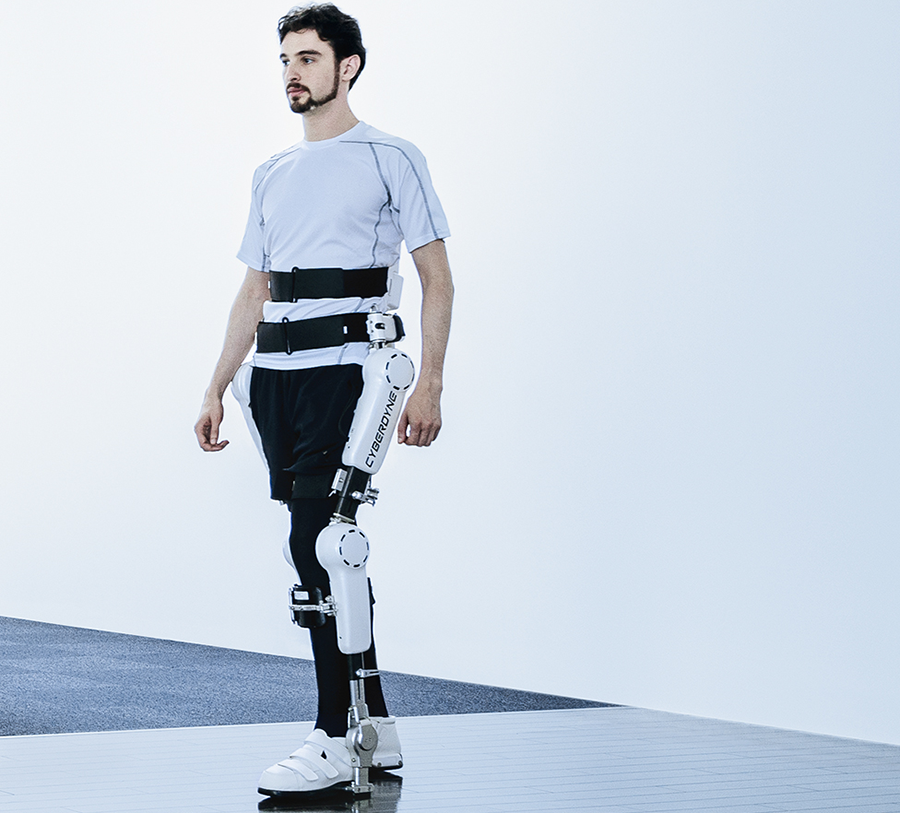Exoskeletons are making life easier for many. These machines are used wherever human labor cannot be replaced by full automation or robotic systems. Exoskeletons are helping quadriplegics or paraplegics walk, helping normal people carry on heavy-duty tasks and even helping workers on the floor doing laborious work. In a not-so-distant future, construction workers may use the term “suit up” to mean putting on an exoskeleton. After car manufacturer Ford launched exoskeletons for its workers recently, many are asking if exoskeletons are the future of labor. I’ve made a list of 4 very interesting exoskeletons that are making enormous impacts on the lives of many people. Please take a look below.
Rex Bionics has developed Rex, an exoskeleton designed for people with mobility impairments, including those with more severe disabilities, REX offers rehabilitation options and improves mobility for a wide range of people.
REX is fully adjustable to one’s measurements within minutes and learning to use it is quick and easy for the user. “It didn’t take me as long as I thought it would to learn how to use REX and when I moved the joystick and stood it felt quite natural. The main benefit to me is getting a full range of movement in my legs, I get a good stretch from REX when I move forwards, backwards and sideways,” says Gareth Herridge, who suffered spinal injury.
Rex is hands free for functional exercise and activities of daily living.
Allows new users to walk with autonomous control in a few minutes.
Fully automated for forwards, backwards, sideways and turning movements.
Rex squats, lunges, sit-to-stand, leg swings, and stretches. Rexercise mode enables structured, reproducible functional exercise programs directed by healthcare professionals.
People with severe disabilities can successfully use REX.
Shares the physical demands of delivering therapy and reduces the strain on therapists.
German Bionic, headquartered in Augsburg and with offices in Berlin and Tokyo, is the first German manufacturer to develop and manufacture exoskeletons for use in industrial production. The company has developed Cray X, which is a man-machine system that combines human intelligence with mechanical power by actively assisting or augmenting the wearer’s movements, minimizing the risk of work-related accidents and congestive illnesses. The German Bionic Cray X was specially designed for the manual handling of heavy goods and tools by reducing the compression pressure in the lower back. It relieves the lower back when lifting heavy objects, by actively mimicking and amplifying movements. It uses state-of-the-art micromechanical components, a maximum-performance battery and an ergonomic, ultralight carrying system.

Cyberdyne’s HAL (Hybrid Assistive Limb) is the world’s first cyborg-type robot. It can improve, support and enhance the wearer’s bodily functions. Wearing of HAL® leads to a fusion of “man”, “machine” and “information”. HAL® assists a physically challenged person to move and enables him or her to exert bigger motor energy than usual. HAL® is also considered as the system that accelerates a motor learning of cerebral nerves. The mechanism to move the human body does not involve moving muscles only. The brain confirms how the body moved on what sort of signals. When HAL has appropriately assisted the motions of “walking”, the feeling “I could walk!” is fed back to the brain. It enables the brain to learn the way to emit necessary signals for walking gradually. This leads to “the important first step” in walking of the physically challenged person without being assisted by HAL.
Read more Designing Exoskeletons to Interact with Humans
Suit X makes exoskeletons for industrial and medical use. Their industrial products include:
Back X – An effective and affordable exoskeleton that reduces the risk of work-related back injuries
Leg X – A revolutionary knee exoskeleton that allows the wearer to squat repeatedly or for prolonged periods of time by reducing the knee joint and quadricep muscle forces. The amount of support can be adjusted to suit the needs and weight of the user.
ShoulderX – a revolutionary industrial arm exoskeleton developed in collaboration with UC Berkeley, augments its wearer by reducing gravity-induced forces at the shoulder complex, enabling the wearer to perform chest to ceiling level tasks for longer durations and with less effort.
MAX – The MAX system is designed to provide a flexible exoskeleton solution that can be adapted for a variety of different workplace tasks.
Suit X’s medical exoskeleton is called the Phoenix. It is the world’s lightest and most advanced exoskeleton designed to help people with mobility disorders to be upright and mobile. Phoenix has successfully enabled many users to stand up and walk whether in a clinic, at home or at workplace.












